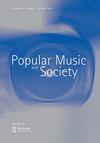Ramsey Lewis (1935-2022)
IF 1
3区 艺术学
0 MUSIC
引用次数: 0
Abstract
Ramsey Lewis (27 May 1935–12 September 2022) was a marvelous jazz pianist who seamlessly infused gospel, rhythm and blues, and rock and roll into his playing. Yet his contributions to the jazz art form were often met by critics and “jazz purists” unenthusiastically. This cool reception was largely due to these hybridizations, which often maintained a gospel/blues feel no matter what the source material was. In contrast with the mainstream jazz practice in which many recorded and performed songs came from musicals from earlier decades, Lewis’s interpretations of contemporary pop songs hurt him in the eyes of many jazz gatekeepers, although not with the album-buying public. Rock and roll and rhythm and blues were often blamed for the so-called demise of jazz in the 1960s, but the truth was much more complex. It wasn’t until Lewis’s recognition as a Jazz Master by the National Endowment for the Arts in 2007 that a reassessment began of his place in the jazz world. Ramsey Lewis began studying classical piano music in Chicago at the age of four and studied gospel organ, also at a young age. The Ramsey Lewis Trio was an extension of his first band, the Clefs, which he joined in high school. This began a life of musical contributions in which Lewis recorded 80 albums, three of which earned him Grammy Awards and five of which became gold records. Lewis honed his craft as a jazz musician in the bars and lounges of Chicago. He recalled, “It was great because it gave musicians coming up [in the ranks] the chance to get their act together, get their performance chops. It gave them the chance to try this musical style, that musical style” (Di Nunzio). What is often described as a splintering of jazz styles in the 1960s occurred at the same time that jazz was being combined with a variety of other musical styles. Even though his particular brand of fusion wasn’t often labeled as such at the time, Lewis was a leading figure in the movement. It wasn’t until his 1965 recording of “The ‘In’ Crowd” broke into the Billboard top 10 that he gained a level of fame rarely bestowed upon a jazz musician of the time. In 1966, Lewis followed with another hit – a jazz/gospel rendition of the antebellum spiritual “Wade in the Water.” Lewis and similar artists were often criticized by the jazz press for eschewing some of the more complex harmonic progressions usually heard in jazz standards. “Wade in the Water,” a song that found a middle ground between gospel, blues, jazz, and Motown, relied on two chords for much of the cut. But what was lost on many of the critics was that Lewis was taking century-old art forms (gospel music and the blues) that comprised an important part of the root system of jazz and reuniting them with their offspring. That his music resonated so strongly with such a large segment of the public helped created an important cultural moment. These and other crossover hits in the mid-1960s helped launch and sustain Lewis’s music-making career for more than fifty years. In 1974, Lewis collaborated with Maurice White – who later had an essential role in the creation and direction of the funk/soul group Earth, Wind and Fire – to create the album Sun Goddess, a foreshadowing of the POPULAR MUSIC AND SOCIETY 2023, VOL. 46, NO. 3, 322–323 https://doi.org/10.1080/03007766.2023.2221576拉姆西·刘易斯(1935-2022)
拉姆西·刘易斯(1935年5月27日至2022年9月12日)是一位出色的爵士钢琴家,他将福音、节奏蓝调和摇滚乐完美地融入了自己的演奏中。然而,他对爵士乐艺术形式的贡献经常遭到评论家和“爵士乐纯粹主义者”的冷遇。这种很酷的反响很大程度上是由于这些杂交,无论源材料是什么,它们都经常保持福音/布鲁斯的感觉。与主流爵士乐实践形成鲜明对比的是,在主流爵士乐实践中,许多录制和表演的歌曲都来自前几十年的音乐剧,刘易斯对当代流行歌曲的诠释在许多爵士乐看门人眼中伤害了他,尽管这张专辑并没有在公众中购买。摇滚乐、节奏蓝调经常被认为是20世纪60年代所谓爵士乐消亡的原因,但事实要复杂得多。直到刘易斯在2007年被美国国家艺术基金会认定为爵士大师,人们才开始重新评估他在爵士乐界的地位。拉姆西·刘易斯四岁时开始在芝加哥学习古典钢琴音乐,并在很小的时候学习福音管风琴。拉姆西·刘易斯三重奏是他高中时加入的第一支乐队Clefs的延伸。这开始了刘易斯的音乐生涯,他录制了80张专辑,其中三张为他赢得了格莱美奖,五张成为了金唱片。作为一名爵士音乐家,刘易斯在芝加哥的酒吧和休息室里磨练了自己的技艺。他回忆道,“这太棒了,因为它给了(队伍中的)音乐家们一个机会,让他们有机会一起表演,有机会表演。它给了他们尝试这种音乐风格,那种音乐风格的机会”(迪努齐奥)。20世纪60年代,爵士乐与各种其他音乐风格相结合的同时,也发生了人们常说的爵士乐风格的分裂。尽管刘易斯的融合品牌在当时并不经常被贴上这样的标签,但他是这场运动的领军人物。直到他1965年录制的《In’Crowd》进入公告牌前十名,他才获得了当时爵士音乐家罕见的名气。1966年,刘易斯又推出了另一首热门歌曲——对战前精神歌曲《水中韦德》的爵士/福音演绎。刘易斯和类似的艺术家经常被爵士乐媒体批评,因为他们避开了爵士乐标准中通常听到的一些更复杂的和声进行曲。“Wade in the Water”这首歌在福音、蓝调、爵士乐和摩城之间找到了一个中间地带,大部分剪辑都依赖于两个和弦。但许多评论家忽略的是,刘易斯正在采用百年历史的艺术形式(福音音乐和蓝调),这些艺术形式是爵士乐根源的重要组成部分,并使他们与后代团聚。他的音乐在如此广大的公众中产生了如此强烈的共鸣,这有助于创造一个重要的文化时刻。这些和20世纪60年代中期的其他跨界热门歌曲帮助开启并维持了刘易斯50多年的音乐创作生涯。1974年,刘易斯与莫里斯·怀特(Maurice White)合作,创作了专辑《太阳女神》,为2023年流行音乐与社会埋下了伏笔https://doi.org/10.1080/03007766.2023.2221576
本文章由计算机程序翻译,如有差异,请以英文原文为准。
求助全文
约1分钟内获得全文
求助全文
来源期刊

POPULAR MUSIC AND SOCIETY
MUSIC-
CiteScore
1.10
自引率
0.00%
发文量
33
期刊介绍:
Popular Music and Society, founded in 1971, publishes articles, book reviews, and audio reviews on popular music of any genre, time period, or geographic location. Popular Music and Society is open to all scholarly orientations toward popular music, including (but not limited to) historical, theoretical, critical, sociological, and cultural approaches. The terms "popular" and "society" are broadly defined to accommodate a wide range of articles on the subject. Recent and forthcoming Special Issue topics include: Digital Music Delivery, Cover Songs, the Music Monopoly, Jazz, and the Kinks. Popular Music and Society is published five times per year and is a peer-reviewed academic journal supported by an international editorial board.
 求助内容:
求助内容: 应助结果提醒方式:
应助结果提醒方式:


